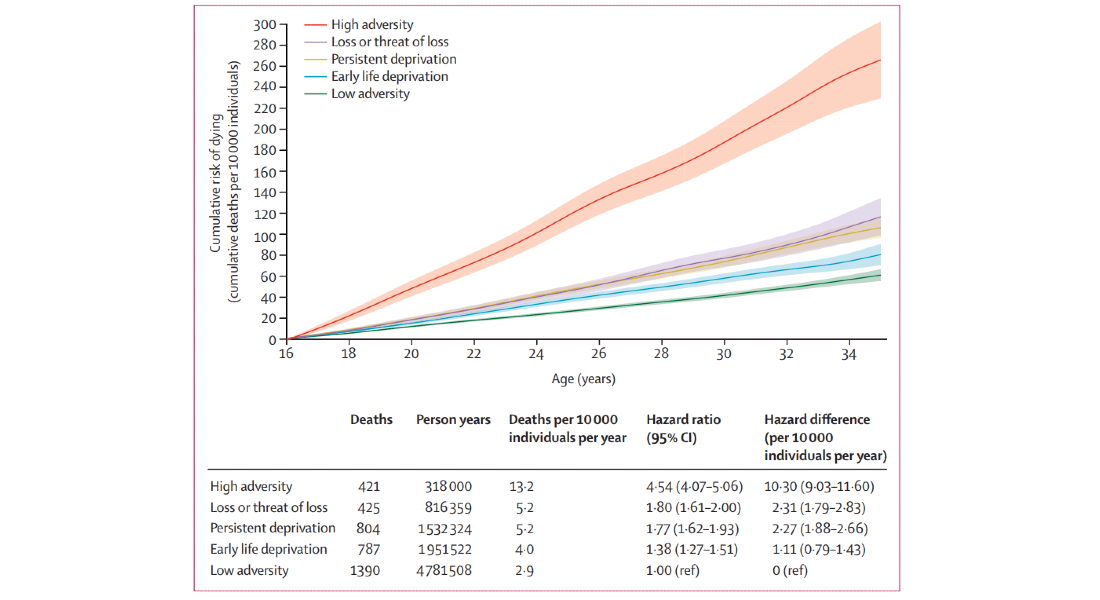Mortality in early adulthood
We used the DANLIFE cohort to distinguish between three different dimensions of childhood adversity: poverty and material deprivation; loss or threat of loss within the family; and aspects of family dynamics, such as maternal separation. We applied a group-based multi-trajectory clustering model to define five trajectory groups of adversity amongst children between the ages of 0 and 16 years, and we assessed the associations between these trajectories and mortality rates between age 16 and 34.
Compared to children with a low-adversity trajectory, those who experienced early-life material deprivation (hazard ratio 1.38, 95% CI 1.27–1.51), persistent deprivation (1.77, 1.62–1.93), or loss or threat of loss (1.80, 1.61–2.00) had a moderately higher risk of premature mortality. A small proportion of children (36,081 [3%]) were exposed to multiple adversities within all dimensions and throughout their entire childhood. This group had a 4.5 times higher all-cause mortality risk (95% CI 4.07–5.06) than the children with a low-adversity trajectory, which corresponds to 10 (95% CI 9–12) additional deaths per 10,000 person-years. In this high-adversity population, accidents, suicide, and cancer were the most common causes of death.
We conclude that almost half of the children in our study had experienced some degree of adversity, and this was associated with a moderately higher risk of mortality in adulthood. Amongst these children, a small group had multiple adversities across social, health, and family-related dimensions. This group had a markedly higher mortality risk in early adulthood than did of other children; this finding warrants further attention from public-health authorities and researchers.

